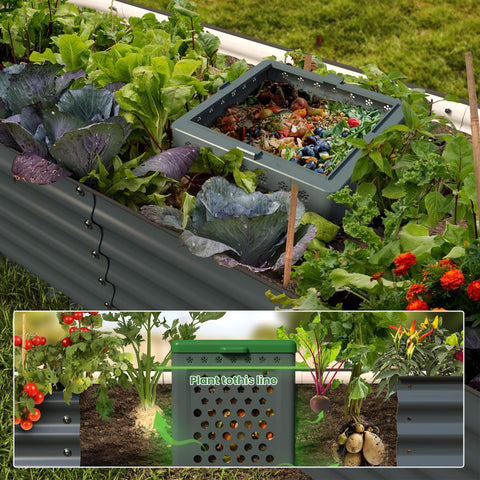Winter Compost? Remember These Three Basic Factors
Composting in winter may be a challenge, but it should not discourage you. I certainly don't just imagine the possibility of growing crops healthily in the spring planting season. Using natural rich black compost, you can rest assured that you have healthy vegetables and plants in the garden! Use these guidelines from Olle Garden Beds to find the best ways for your needs.
Composting is a must in my garden. I can grow healthy, organic and clean food for my family. Composting seems troublesome in winter, but abundant autumn leaves seem to be a waste that cannot be ignored. My kitchen residue doesn't stop in winter, so I just need to take responsibility and make full use of it.
Although some factors may slow down this process, winter composting is not impossible. In addition, all the rich materials for your autumn garden cleaning should not be wasted. Learn how to cook compost successfully in cold winter with these three smart tips, ideas and guides.

1. Compost insulation
In order to decompose compost materials, microorganisms such as bacteria and fungi must play a role in this process.
Compost box and tumbler
When composting in winter, the advantage of composting box and tumbler is the convenience of movement. In winter, you can always move it to a warm place. The only disadvantage is limited space. No matter how much food residue you have, make sure that the proportion of carbon and nitrogen is always balanced. Compost box and tumbler with built-in insulating material can keep compost warm and running. Turning the down infrequently also helps keep the interior warm and uniformly moist.
Compost pile
Although sunlight is scarce this season, it will still help to place compost in areas where you can get as much sunlight as possible. Considering how to completely prevent the compost from being exposed to frost, the compost heap will have its disadvantages this season. It is helpful to dig a hole and lay a thick layer of fallen leaves before adding the rest of the compost material. Cover your pile with a tarpaulin to protect it from the snow. Spray with water from time to time to keep wet but not soaked.
2. Learn to identify brown from green compost materials
Although it is convenient to throw things into the compost heap or garbage bin, there is actually a formula. If you don't want inactive or very dirty compost, you need to know which compost material is brown or green and the mix proportion.
Green Composting Materials
We can agree that despite our actions, organic materials will still decompose and decay. However, if you want healthy composting, you need to follow simple rules. Healthy composting requires a balanced proportion of 2 portions of brown compost material and 1 portion of green material. Green compost materials or nitrogen rich ingredients in compost are usually found in the kitchen. From fruit peels and skins to food residues, except for meat and dairy products. Check here for acceptable or suitable composting materials to obtain healthy compost.
Brown compost material
Brown compost material is the carbon source of dry materials such as fallen leaves, rice straw, branches and grasses. They neutralize nitrogen in green compost materials. Green compost will be used throughout the year in your kitchen. So you'd better leave the fallen leaves collected in autumn in the shop. You need a stable supply of brown compost materials, because a large part of compost needs to be brown or carbon source materials.
3. Consider your location for humidity control
Depending on your region, you may want to add more water to the compost or protect the compost from excessive water when it starts to rain cats and dogs. Learn how to keep compost at the right humidity level depending on the weather and climate in your area.
Northern region
Although it snows in winter, dry winter air will cause the compost to lose water. Ensure that compost is watered lightly. Even urine is good for your compost. Avoid watering and composting in particularly cold weather. After adding compost materials or water, be sure to cover the compost bin or compost pile with waterproof cloth.

Southern region
Although you can compost in many areas of the south, just like in different winters, preventing the compost from getting wet will be your challenge. Heavy rain in the southern coastal areas will be a challenge. Always cover the compost bin and compost pile to prevent rainwater from pouring down. On the other hand, compost in southern desert and semi desert areas is an ideal choice in winter. You must find a way to keep your compost bin or pile up water to keep it moist. For example, in a compost pile, make a hole in the center of the pile to collect water.
Even cold weather should not prevent you from gardening. In fact, one of the gardening activities you should do in winter is composting. Different from most people's idea, winter is actually the time for composting in the garden, which can also save money. Imagine not having to buy compost from the garden store. This winter, your indoor plants also need compost. You must need more to start sowing indoors earlier for spring sowing. Keep composting in winter and keep your money in your pocket!
